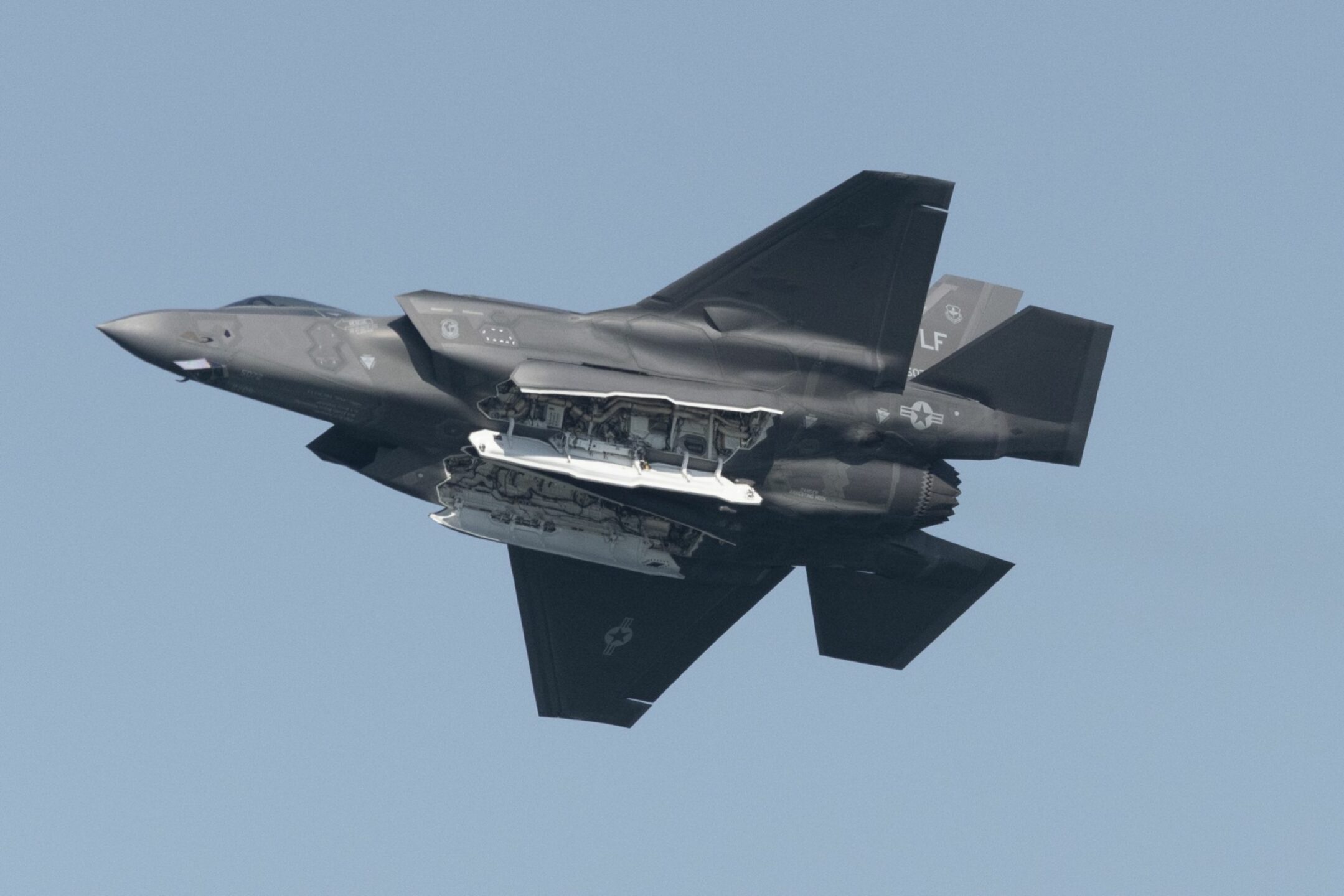
Peter Zeihan: What Would a Conflict in Taiwan Look Like?
Let’s discuss what China’s potential invasion of Taiwan would look like. Should China attack, both Biden and Trump have been explicit that the US would…
Thought Leader: Peter Zeihan

That phrase “domain awareness gap” — a perfect example of Pentagonese, lacking only the acronym DAG — transported me back 36 years. The story then wasn’t a giant white balloon over Montana. It was a small white Cessna in Red Square.
I was a graduate student researching a doctoral dissertation in Hamburg and supplementing my meager scholarship by freelance writing for the Daily Telegraph. My routine in those pre-internet days was to toil in the archives for part of the day and then check the newswires for any German stories that might be of interest to English readers. But May 28, 1987, was doubly unusual. First, I had my wisdom teeth extracted. I had chosen the only French dentist in the phone directory, as the movie Marathon Man had put me off German ones. He had opted for local anesthetic and brute force. It had been an exceedingly bloody and painful business, leaving my mouth so swollen that I could not speak.
The second unusual occurrence was that the phone rang in the cramped attic apartment where I lay, recovering from my ordeal. It was the Telegraph’s foreign editor, a bulbous and fearsome New Zealander named Nigel Wade. “Hello, Niall,” he said. “Some German kid just landed his plane in Red Square. It’ll be the lead story in tomorrow’s paper.” I tried to say something to the effect that I was incapacitated but failed. “Don’t f*** it up,” Wade added, and hung up.
The next few hours were among the worst of my life. In those distant days, journalists didn’t write their stories on laptops. Email was unknown. Having spoken to our sources, we filed our copy over the phone. As I could emit only muffled groans, I could do neither. I was reduced to listening desperately to German radio and television, cobbling together the story, and then typing it up on what appeared to be a steam-powered telex machine in the Hamburg central post office.
Mathias Rust was just 18 when he flew from Helsinki to Moscow in a rented single-engine Cessna, landing it on Bolshoy Moskvoretsky Bridge, just to the east of the Kremlin. He had been tracked several times by Soviet Air Defense Forces and civilian air traffic controllers, as well as by a Soviet Air Force interceptor aircraft. But Rust’s plane was repeatedly mistaken for a friendly civilian aircraft and the authorities did not intercept him.
We shall one day learn a similar story about what really happened at NORAD after the Chinese balloon entered US airspace north of Alaska on January 28. It is hard to believe that Gen. VanHerck heard of it only when a local newspaper in Billings, MT, published a photograph — almost as hard to believe as the shameless Chinese claim that it was just a weather balloon that drifted off course. And indeed we now know that NORAD was tracking the balloon all along and keeping it under wraps. Even after the news came out, Team Biden hesitated to cancel Secretary of State Antony Blinken’s planned trip to Beijing, which was intended to reduce Sino-American tensions. Presumably they were just hoping none of us ordinary folks would spot a large white orb floating in the sky. They underestimated Montanans’ eagle eyes.
To say the least, the timing was unfortunate, not only for Secretary Blinken’s bid for detente but also for my old friend Robert Kagan, whose essay, entitled “Challenging the US Is a Historic Mistake,” was published in the Wall Street Journal three days after the balloon was spotted. I was tempted to give this week’s column the headline “Challenging the US Is a Historic Opportunity” — for so it must now seem in Beijing.
“Like Nazi Germany and Imperial Japan,” Kagan argued last week, “today’s China is a rising power determined to dominate its region and convinced that American strength is waning. It runs the risk of experiencing a similar fate if it attacks Taiwan.”
“Both Japan and Germany,” he went on, “underestimated both the actual and potential power of the US … Xi Jinping runs the risk of making the same historic mistake.”
Kagan based his argument on some shaky estimates of the combined gross domestic product of the Allied and Axis powers in World War II, arguing that China today is in a weaker position than the Axis powers in 1941. But that is only true if one includes the Soviet Union in the Axis (as the Journal proposed in a subsequent correction), which makes little sense when Hitler launched Operation Barbarossa against the Soviet Union in June of that year. It also seems to imply that Britain, which had fought the war more or less alone since the fall of France, did not matter, when its GDP was in fact around the same as the USSR’s in 1941.
The idea that, in the event of a surprise attack in Taiwan, the United States would dust down the World War II playbook is no doubt comforting to some. But another word that suggests itself is “complacent.” “Today,” wrote Kagan, “the US and its allies and partners (which includes most of Europe, Japan, India, South Korea, Australia and others) produce over 50% of the world’s wealth, while China and Russia together produce a little over 20%.” But if we know one thing about power today, it is surely that it’s not equivalent to GDP. If it were, the war in Ukraine would by now have been won by Russia, which had a pre-war GDP nine times larger.
In an essay in Foreign Affairs last year, Michael J. Mazarr summarized a recent RAND Corporation study commissioned by the US Defense Department’s Office of Net Assessment on the age-old question, “What Makes a Power Great?”
“In the struggle for advantage among world powers,” wrote Mazarr, “it is not military or economic might that makes the crucial difference but the fundamental qualities of a society: the characteristics of a nation that generate economic productivity, technological innovation, social cohesion, and national will.” The seven leading characteristics, according to the RAND study are:
“The United States ultimately prevailed over the Soviet Union in the Cold War,” Mazarr argued, “because it was more energetic, innovative, productive, and legitimate.” But can the same be said of the United States by comparison with China today? Here’s the RAND answer:
The United States displays some of the characteristics of a once dominant power that has passed its competitive prime: by some important measures, it is complacent, highly bureaucratized, and seeking short-term gains and rents rather than long-term productive breakthroughs. It is socially and politically divided, cognizant of the need for reforms yet unwilling or unable to make them, and suffering a loss of faith in the shared national project that once animated it.
Whereas:
China clearly benefits from a potent national will and ambition, both domestically and internationally, and a unified national identity among much of the population. It has an active state that is pouring resources into human capital, research and development, high technology, and infrastructure.
Yet this may be over-complicating matters. In his classic book The Rise and Fall of the Great Powers, Paul Kennedy laid special emphasis on manufacturing as a source of power, for the simple reason that in time of war there is no substitute for having an economy that can mass-produce weapons. In the 20th century the United States was unrivaled in its industrial capacity. That has ceased to be true in the past 20 years. As recently as 2004, US manufacturing value-added was two-and-a-half times larger than China’s. But China overtook the US by this measure in 2010. In 2021 Chinese manufacturing value-added was nearly double that of the US. And it’s worth pondering which of the two superpowers has more dual-use manufacturing capacity. Not many dishwasher factories can quickly switch to making precision missiles.
Manufacturing value-added (in billions of 2015 dollars)
Source: World Bank
The relative decline of American manufacturing is the backstory to a major breakdown in defense procurement, which Seth G. Jones of the Center for Strategic and International Studies (CSIS) has called the “Empty Bins Crisis.” As Jones puts it, “The US defense industrial base is not adequately prepared for the competitive security environment that now exists. … In a major regional conflict … the US use of munitions would likely exceed the current stockpiles of the US Department of Defense (DoD), leading to a problem of ‘empty bins.’” In short, “the US defense industrial base — including the munitions industrial base — is not currently equipped to support a protracted conventional war.” It is the reverse of consoling that the situation is even worse for America’s principal European allies.
Just as the Covid-19 pandemic exposed the sclerotic state of American public health, so the Russian invasion of Ukraine has laid bare the comparable deterioration of our once mighty military-industrial complex. Here are some startling examples:
Let’s put this simply: The US defense “primes” — the big five defense contractors — are struggling to keep up with Ukraine’s military needs in a relatively small war against a Russian invasion force that has performed dismally in close to a year of conflict. And bear in mind that Russia’s manufacturing value-added is one-tenth that of the United States.
Diagnosing the problem is not difficult. In the words of William LaPlante, the under secretary of defense for acquisition and sustainment, “One person’s efficiency is another person’s vulnerability.” The Big Five reply that they cannot be expected to maintain arms-manufacturing capacity when the government’s needs are so unpredictable. The time between our ignominious exit from Afghanistan and our decision to arm Ukraine for a protracted war was eight months.
But now consider what all this implies for the much-discussed scenario of a showdown between the US and China over Taiwan. CSIS estimates that, in a shooting war over Taiwan, the US would expend more than 5,000 long-range missiles in three weeks of conflict: 4,000 joint air-to-surface standoff missiles (JASSMs), 450 long-range antisurface missiles (LRASMs), 400 Harpoons, and 400 Tomahawk land-attack missiles (TLAMs). The LRASMs would be exhausted within a week. Yet it takes roughly two years to produce JASSMs. China would be less constrained as it is “investing in munitions and acquiring high-end weapons systems and equipment five to six times faster than the United States.”
As National Review reported last month, there are similar concerns about the supply of the Navy’s SM-6 antiaircraft and antiship missiles. US Fleet Forces commander Admiral Daryl Caudle has said that he is “not forgiving of the defense industrial base” because it is “not delivering the ordnance we need.”
The procurement problem goes deeper than the supply of munitions. According to a report by the Government Accountability Office (GAO) last year, the cost of building the new 12-vessel Columbia class of nuclear-armed submarines has risen by $3.4 billion to a projected $112 billion. It is now $132 billion, and there are doubts that the new subs will be available for deployment in 2031. The GAO identified delays in 17 major programs, including the DDG-1000 destroyer, the MQ-4C Triton surveillance drone, the CH-53K cargo helicopter and the MH-139A Gray Wolf helicopter designed to patrol nuclear missile silos.
It gets worse. Last September, the Pentagon had to suspend deliveries of Lockheed’s marquee F-35 fighter jet after a component in the plane’s engine — made by Honeywell — turned out to contain a prohibited Chinese alloy. A “mishap” during a trial flight in December led to another interruption of deliveries. The most recent price tag for the F-35 program is $412 billion.
True, efforts are already underway to address such problems. Section 1244 of the annual defense authorization act passed in December included a multi-year procurement plan for thousands of new antiship, antiair, and strike missiles. Christine Wormuth, the secretary of the Army, and Doug Bush, the assistant secretary of the Army for acquisition, logistics and technology, have committed to tripling the production of 155 mm shells. The Pentagon has come up with yet another mouthful — the “Undefinitized Contract Action” (UCA) — to expedite contracting and delivery of weapons such as Javelins, Stinger surface-to-air missiles and guided multiple launch rocket system (GMLRS). The Army is investing $2 billion to expand munitions production at multiple plants around the country.
And, of course, a new generation of tech-driven defense companies are mounting a challenge to the primes — step forward Anduril and Epirus, to name just two. There is plainly an urgent need for innovation in military technology. On Friday and Saturday two more flying objects appeared in North American airspace. They were shot down without anyone being able or willing to identify what they were, which technically makes them unidentified flying objects. If the Chinese have UFOs, F-22s may not be the answer.
However, as Thomas Karako notes in a recent issue of Strategika, “the workforce training and the supply chains cannot be turned on overnight.” This is not 1941. The idea that the United States was a “sleeping giant” on the eve of Pearl Harbor is a myth that understates America’s preparedness for war. The program of construction that gave the US mastery of the sea in World War II began with the Naval Expansion Act of 1938.
In our time, by contrast, we have been shrinking our military-industrial base. In 2013 the Environmental Protection Agency shut down the 121-year-old Doe Run lead smelting plant in Herculaneum, MO — the last primary lead smelting plant in the country. And that’s just lead. According to a 2021 report from the Department of Energy, “of the 35 mineral commodities identified as critical … the United States lacks domestic production of 14 and is more than 50% import-reliant for 31.” No doubt great from an ESG perspective. But what about the WWIII perspective?
“While an attack on Taiwan would not have the same effect on Americans as the attack on Pearl Harbor,” Robert Kagan’s recent essay concluded, “the US is already very anxious about the threat of China, even when an attack on Taiwan is only prospective. It would be foolish for the Chinese to assume that such an attack would not prompt the American public to support a far more aggressive approach.” Well, maybe so. Perhaps Americans really are ready to fight for Taipei. But what if the weaponry needed to give expression to that fighting spirit ran out in less than a week?
One of my favorite essays of the last three years was Harold James’s diatribe against “late Soviet America.” It has aged well, as they say, and ageing is of course part of the problem. Among the many symptoms of what the Pentagon might call Great Power Rust Syndrome (GPRS) in the original Soviet case was the deterioration of military efficiency that Mathias Rust exposed. But at least there were consequences for those responsible. Not only was Rust sentenced to four years in a labor camp; Mikhail Gorbachev also fired his minister of defense, Marshal Sergei Sokolov, and the commander-in-chief of the Soviet Air Defense Forces, Marshal Alexander Koldunov.
I am still waiting to hear which senior figures in the US government are being cashiered for their part in the Chinese balloon fiasco. That no heads have yet rolled adds an even more doleful meaning to the phrase “domain awareness gap.”
Peter Zeihan: What Would a Conflict in Taiwan Look Like?
Let’s discuss what China’s potential invasion of Taiwan would look like. Should China attack, both Biden and Trump have been explicit that the US would…
Thought Leader: Peter Zeihan
Dr. Sanjay Gupta: Rethinking Health Rules We Grew Up With
“Drink your milk,” we are told as children. CNN Chief Medical Correspondent Dr. Sanjay Gupta examines our practice of continuing to drinking cow’s milk as…
Thought Leader: Sanjay Gupta
Erika Ayers Badan: Women in the Workplace Wake-Up Call
This headline somehow feels both shocking and completely unsurprising. The McKinsey and Lean In Women in the Workplace study is out, and the takeaway is…
Thought Leader: Erika Ayers Badan

